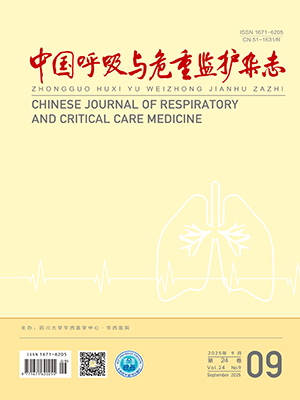Objective To evaluate the impacts of pulmonary rehabilitation at different levels of exercise intensity on health status of patients with moderate to severe COPD. Methods Thirty-two COPD patients treated with pulmonary rehabilitation by ergometry exercise were randomly assigned to exercise intensity level either by anaerobic threshold (AT group; n=15) or by maximum tolerate [high intensity group(HI group); n=17]. Nine COPD patients without exercise training served as control. Bicycle exercise training was conducted in two separate days each week for 12 weeks. Spirometry,cardiopulmonary exercise testing,the St George’s Respiratory Questionnaire (SGRQ) were accessed before and after the rehabilitation program. Results Exercise intensity (%Wmax) was significantly higher in HI group than AT group (69%±14% vs 52%±7%,P lt;0.01). Significant improvement of SGRQ scores after rehabilitation were found both in AT group (-11.91±15.48 U) and HI group (-8.39±9.49 U). However,no significant difference was found between the two groups in the degree of improvement (Z=-0.540,P=0.589). Symptoms and impacts subscale scores of SGRQ were decreased significantly in HI group,but only symptoms scores decreased significantly in AT group. The control group did not show any significant improvement in SGRQ scores. No statistically significant correlation was found between improvement of peak oxygen consumption per predicted (VO2peak%pre) and SGRQ scores. Conclusion Both pulmonary rehabilitation strategies by anaerobic threshold and by maximum tolerate can improve health status of COPD patients significantly with no significant difference between each other.
Citation: WEN Hong,GAO Yi,AN Jiaying,CHEN Qiaoli,ZHENG Jinping.. The impact of Pulmonary Rehabilitation on Quality of Life in Patients with COPD: A Comparison of Exercises Intensity in a Maximum Level and a Anaerobic Threshold Leve. Chinese Journal of Respiratory and Critical Care Medicine, 2009, 09(6): 519-523. doi: Copy
Copyright © the editorial department of Chinese Journal of Respiratory and Critical Care Medicine of West China Medical Publisher. All rights reserved




